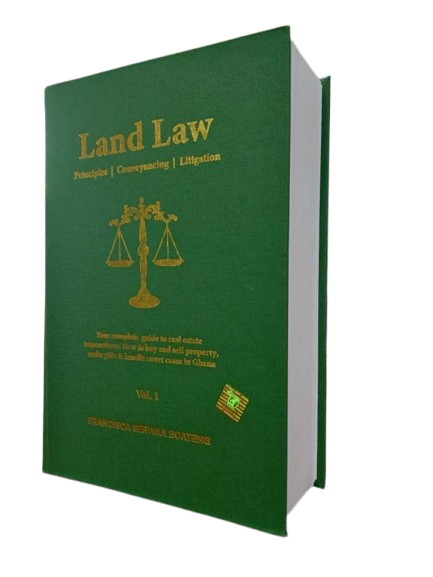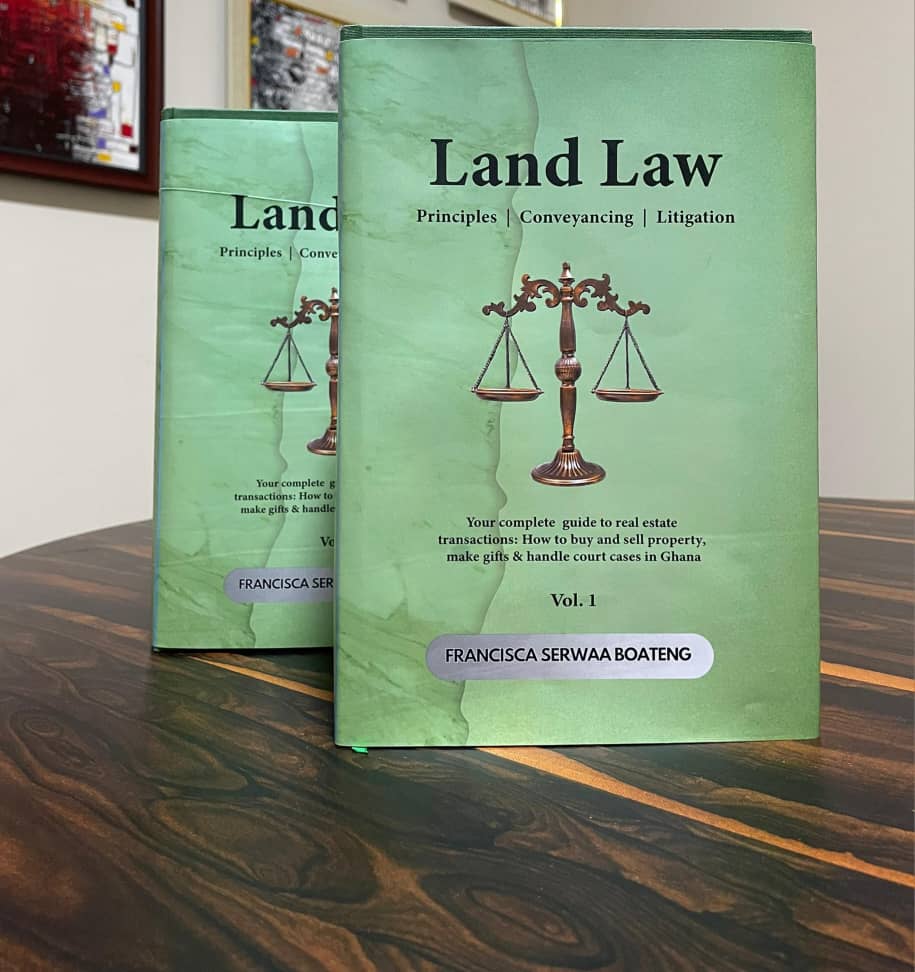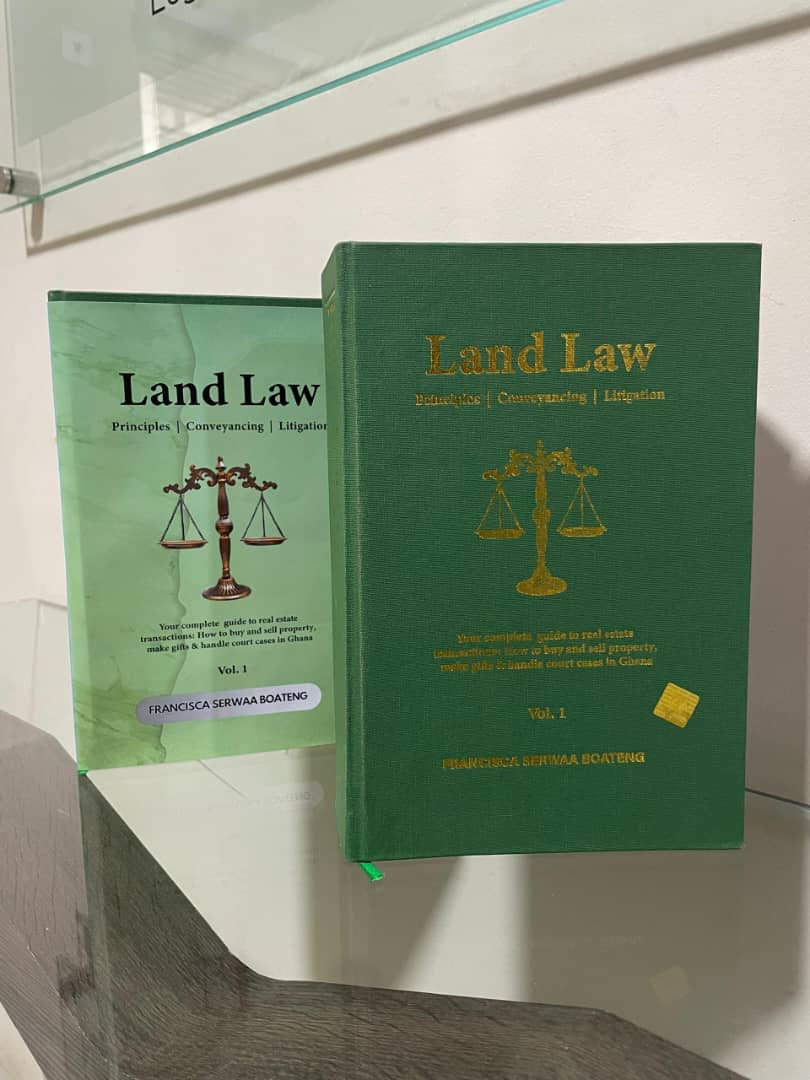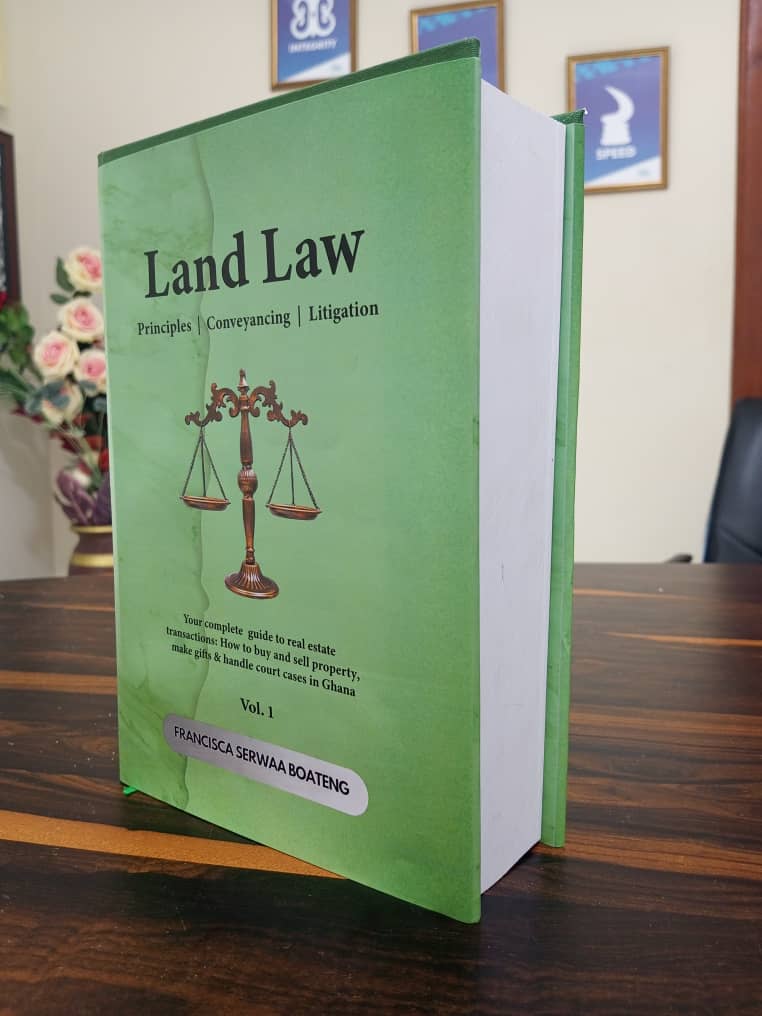Land Law : Principles I Conveyancing I Litigation
ABOUT
THE BOOK
This
book – LAND LAW: PRINCIPLES, CONVEYANCING & LITIGATION - is unlike
any other book on land law in Ghana. It is the first and only book that deals
with all the three salient areas of land law; that is to say, the general
principles of land law, the art and craft of conveyancing and the rules and
procedure for conducting land litigation. It is also the first book to discuss the
provisions of the Land Act of 2020 (Act 1036) in detail with respect to all the
three areas of land law covered in the book. Commentaries on the law and
decided cases are also given to enrich the discussions.
The
book is divided into three sections. Section A is titled “General Overview of Land Law.” It deals with the general principles
of land law as known under the laws of Ghana.
The principles discussed include interests in land, (for example, allodial
title and customary law freehold) stool/skin, clan & family lands, customary
land management, public and vested lands, sale and gifts of land, trusts,
wills, advancement, joint property of spouses, co-ownership, easements,
restrictive covenants and profits á prendre, overriding interests, licences,
statutory wayleaves and future interests.
Section
B comes under the broad rubric of “Buying
Property in Ghana: The Prospects, Potential Problems & Processes to follow.”
It deals with the procedure for buying
land. It gives a list of some potential problems people face when buying
property and proffers insights into how to avoid such problems. It also discusses
all the steps in the conveyancing process; the pre-contract stage, the contract
stage and the conveyancing stage depending on whether the subject land is registered
or unregistered. The discussions also focus on how to prepare land documents
such as leases, subleases, assignments and so forth, as well as stamping and
registration of such documents.
Section
C is
on the broad topic: “Action to Recover
Land or Real Estate (Court Case).” It covers the preliminary issues a
potential plaintiff must consider before rushing to file a land case in court. These
include capacity, venue and proper person to sue or be sued and so on. It also
discusses the various reliefs available to parties in land litigation such as declaration
of title and recovery of possession. After
the reliefs, the section focuses
on the possible defences a defendant can put up against a plaintiff’s claims,
including estoppel and limitation of action. The section concludes with judgments
and how they are enforced through the various execution methods known under
law.
This
book is highly recommended for lawyers, judges and law students at both the
professional law course and LL.B Degree levels. It is also a good reference
source for other professionals who handle land issues such as architects,
surveyors, planners, land regulators and administrators, real estate owners/practitioners
and auctioneers, among others.








